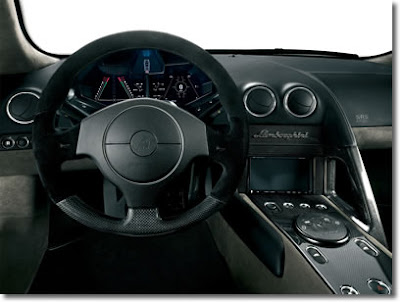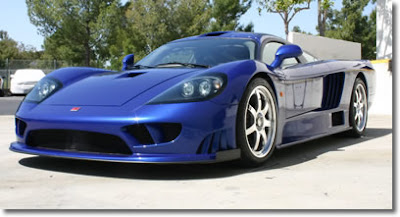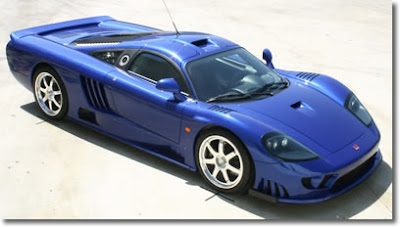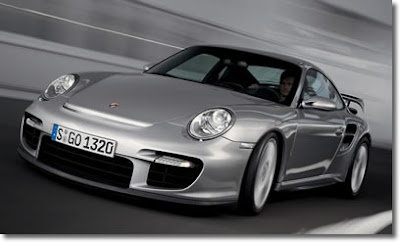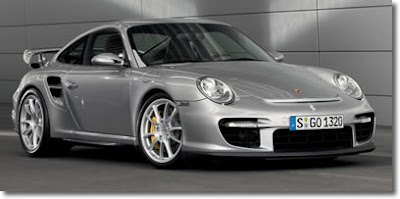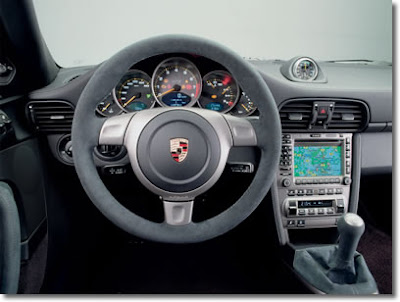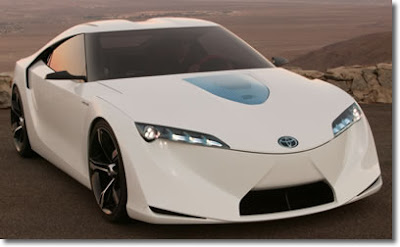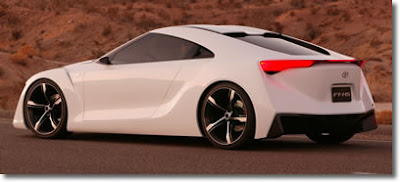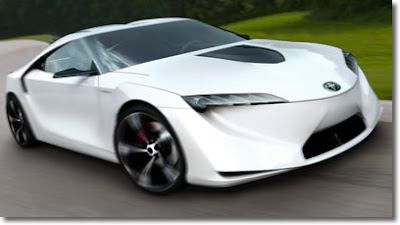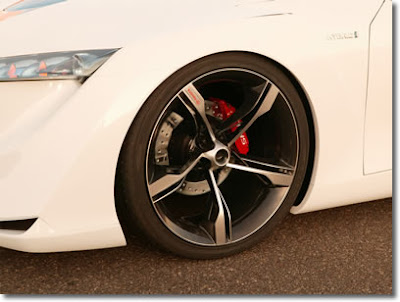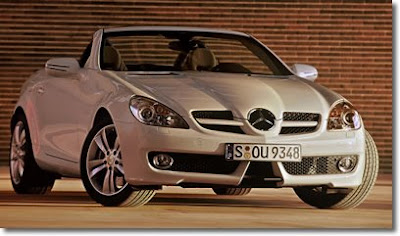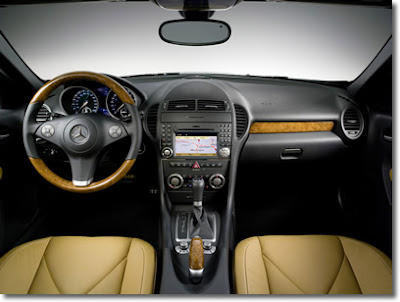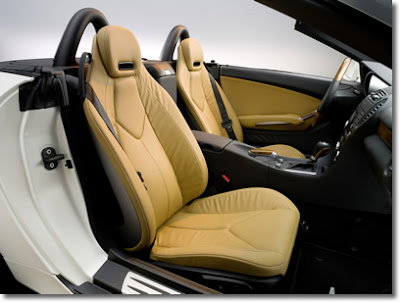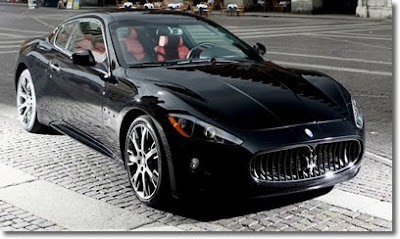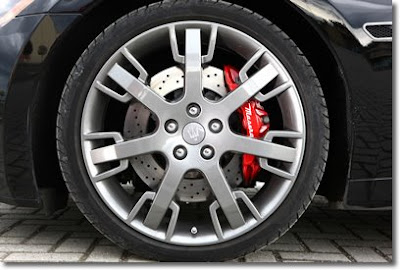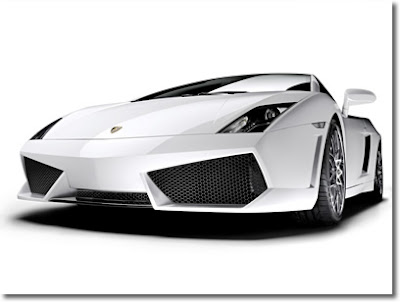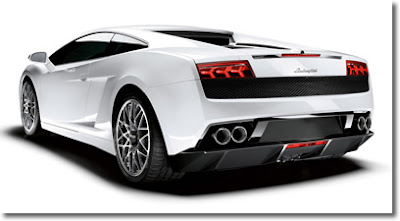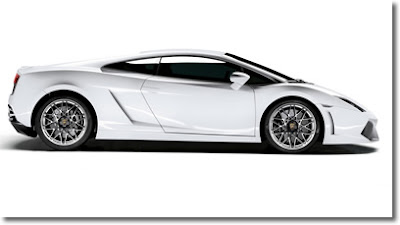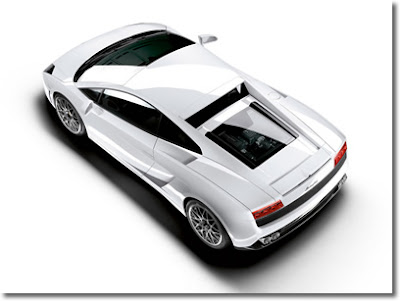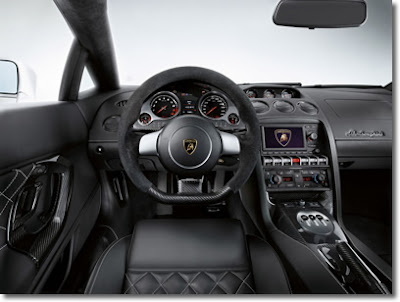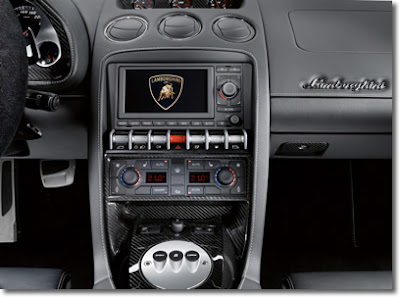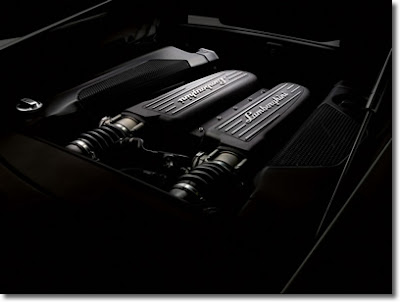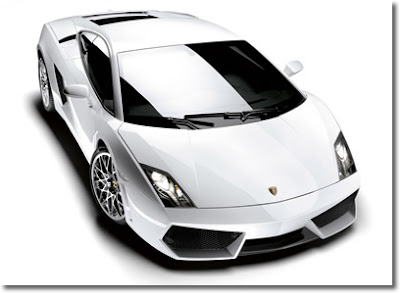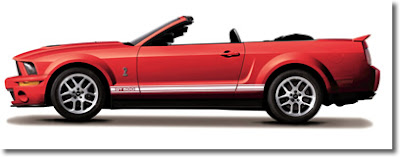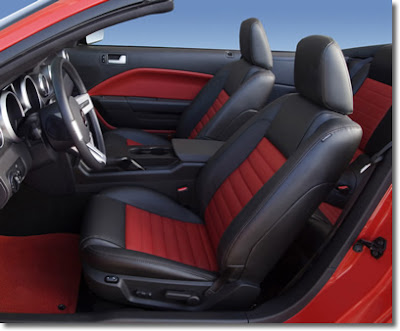2009 Koenigsegg CCXR Edition

Koenigsegg has produced one of the most visually inspiring supercars to date, the 2009 Koenigsegg CCXR Edition. The Edition is an ultra exclusive edition of the Koenigsegg CCXR, one of the top 5 fastest production cars in the world. With a beautiful body done all in unpainted carbon fiber, the CCXR Edition makes no pretense of presenting itself as a luxury car.
The CCXR Edition is a driver's car, pure and simple. While completely street legal in
Perhaps even more impressive is the Koenigsegg CCXR Edition's lateral g-force of 1.5 G. In the hands of the right driver, this is among the most capable sports cars in the world. The Koenigsegg CCXR Edition is only available by special order in a very limited run of, count them, 6 production models.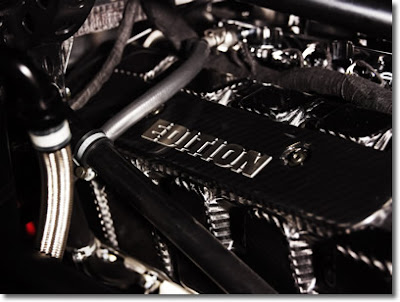
Icing on the cake is that the CCXR Edition has been retrofitted with the ability run on biofuel, premium gasoline or a mixture of both. Because of the combustion characteristics of E85 Ethanol fuel, the CCXR Edition actually is able to utilize its full 1018 horsepower only when running off this type of fuel. A corn-powered 250 mph+ supercar? Sign us up!
| Specifications | |||||||||||||||||||||||||||||||||||
| | ||||||||||||||||||||||||||||||||||
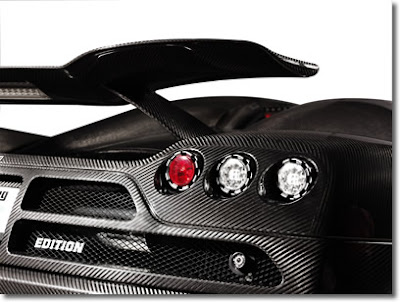
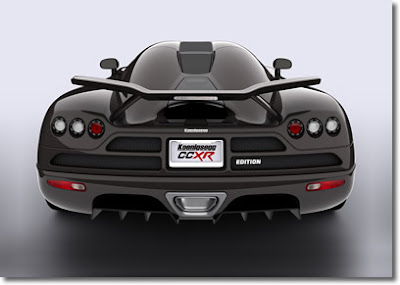
WORLDWIDE PREMIERE OF THE KOENIGSEGG EDITION - GENEVA 2008
[Info Courtesy Koenigsegg]
On
The Edition is the ultimate supercar – a Koenigsegg at its most extreme - built to break records and deliver breathtaking performance. Only a very few models will be produced, in order to ensure exclusive status amongst supercar owners.
It has a clear, fully visible carbon fibre body, and is available in two versions: the 4.8 litre 888bhp CCX Edition and the CCXR Edition, which can be driven on environmentally friendly ethanol E85 and E100 fuels, as well as regular petrol. When run on E85 fuel the 4.8 litre engine produces 1018 bhp.
Furthermore there are many unique details on the car. The new forged, machined and polished aluminium Edition wheels for example, which are extremely light and incorporate optimum brake cooling. The bright, polished surface of the wheels was chosen to maximize the contrast against the exclusive black clear carbon body.
The Edition interior is clad in striking red leather and features a special version of the Koenigsegg Chronocluster including a redesigned centre console. All the interior aluminium parts are anodized in a specially formulated Koenigsegg Edition tone that has a unique and purposeful look.
The Edition has a high performance specially developed rear wing, a larger front splitter plus side front strakes. The aerodynamics have been verified and optimized in CFD and in real life on the Koenigsegg test track in
One of the keys to Koenigsegg’s success, and what distinguishes it from every other supercar manufacturer, is the fact that they are able to build, modify, tune and test their own engines, which means that every engine is precision-made to suit the car it is built for. Furthermore, they are able to fabricate intricate hand-made components at their own hi-tech production facilities, as well as being able to source specialist components from a network of dedicated specialist suppliers and partners - most of which are based in Sweden.
Many of these suppliers are small companies and craftsmen that produce low volumes of incredibly high quality components. Both the assembly and the manufacture of the components that make up a Koenigsegg are incredibly labour-intensive (there are more than 300 hand-formed carbon fibre parts alone in each car, for example), and the materials are without exception extremely costly. Each and every Koenigsegg has a premium price, but then each and every Koenigsegg has been painstakingly built by a select group of automotive artisans.
Source: RSportscars
2010 Audi R8 GT3

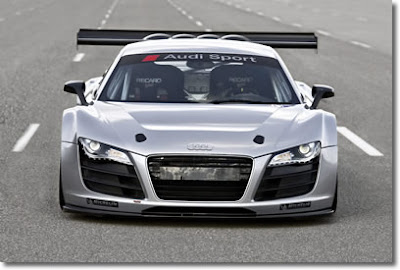 Homoglamated production race cars such as the 2010 Audi R8 GT3 are an exciting consumer perk required by the rules of some race series. In the past, the rule set which calls the R8 GT3 into production has brought us such cars as the BMW M3 CSL, Mercedes-Benz 190 Evolution II and the Porsche 911 GT3 Cup. Mechanically speaking, the 2010 R8 GT3 features several changes from the production car.
Homoglamated production race cars such as the 2010 Audi R8 GT3 are an exciting consumer perk required by the rules of some race series. In the past, the rule set which calls the R8 GT3 into production has brought us such cars as the BMW M3 CSL, Mercedes-Benz 190 Evolution II and the Porsche 911 GT3 Cup. Mechanically speaking, the 2010 R8 GT3 features several changes from the production car. As per GT3 regulations, Audi ditches the Quattro AWD system characteristic of the R8 in favor of a RWD setup. Rest assured the team at Audi Sport is putting significant attention into the RWD system used in the R8 GT3. The
As per GT3 regulations, Audi ditches the Quattro AWD system characteristic of the R8 in favor of a RWD setup. Rest assured the team at Audi Sport is putting significant attention into the RWD system used in the R8 GT3. The
Rounding out known info for the performance upgrades on the 2010 Audi R8 GT3 are a menacing track-ready aerodynamics kit promising greatly increased downforce and handling prowess, a 6 speed sequential manual transmission, and a gasoline motor promising more than 500 horsepower.
 Which brings us to the next question. Will the 2010 Audi R8 GT3, or Audi R16 if you prefer, be street legal? Audi has not released the official word on this yet, saying only that the R8 GT3 "will offer customers a racing sports car equipped with high-calibre technology and the typical Audi qualities, but which is nevertheless easy to handle."
Which brings us to the next question. Will the 2010 Audi R8 GT3, or Audi R16 if you prefer, be street legal? Audi has not released the official word on this yet, saying only that the R8 GT3 "will offer customers a racing sports car equipped with high-calibre technology and the typical Audi qualities, but which is nevertheless easy to handle."
Below is the first info direct from Audi AG, reprinted in full. More details on the 2010 Audi R8 GT3 will be posted as they arise.
| Specifications | |||||||||||||||||||||||||||
| | ||||||||||||||||||||||||||

 Audi develops race version of the R8
Audi develops race version of the R8
Official Audi AG Press Release
- * Customer sport programme with the mid-engine sportscar,/li>
- * First races planned for 2009 season
- * Factory driver Frank Biela completes roll-out
"The R8 is the first production Audi bearing the name and genes of a successful racing sportscar and is therefore an excellent base from which to build up our first big customer sport programme," explains Head of Audi Motorsport Dr Wolfgang Ullrich. "Ever since the R8 was unveiled we’ve been inundated with enquiries about a race version. With the Audi R8 we will offer customers a racing sportscar equipped with high-calibre technology and the typical Audi qualities, but which is nevertheless easy to handle."
The Audi R8 conforms to the production-based GT3 regulations allowing the car to be fielded in numerous national and international race series.
Because the GT3 regulations prohibit the use of four-wheel drive the Audi R8 comes with the typical GT rear-wheel drive. The power is transmitted via a newly developed six-speed sequential sports gearbox. The suspension uses almost exclusively components from the production line. A comprehensive list of safety equipment guarantees the highest-level of passive safety. A modified front end and a large rear-wing generate the required downforce for the race track.
The Audi R8, which bears the project name "R16" within Audi Sport, was developed under the direction of Audi Sport. Mid August, the first prototype successfully completed a roll-out in the hands of Audi factory driver Frank Biela.
The first test races in various European racing series are scheduled for the 2009 season. Delivery to the customers is planned from the autumn of this coming year.
The customer cars are manufactured together by Audi Sport and the quattro GmbH, which is also responsible for production of the Audi R8 street version, and Audi Hungaria Motor Kft. (Györ).
Source: RSportscars
2009 Alfa Romeo 8C Competizione
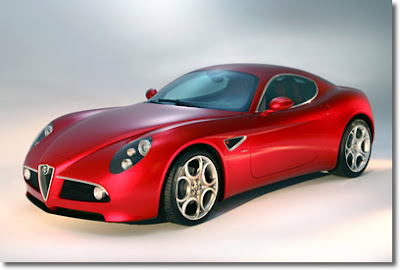
The engine is from another Italian thoroughbred, Maserati's Quattroporte, although it's been enlarged to 4.7 liters of displacement. It makes 444 horsepower at 7,000 rpm, and 347 lb-ft of torque at 4,750 rpm, with a 7,500 rpm redline. That engine will be placed behind the front axle for a low center of gravity and ideal weight distribution.
 The sole transmission choice will be a six-speed sequential manual with paddles, mounted as part of the rear axle for better weight distribution, as is the current vogue. The Q-Select gearbox will have five distinct modes: Manual-Normal; Manual-Sport; Automatic-Normal; Automatic-Sport and Ice.
The sole transmission choice will be a six-speed sequential manual with paddles, mounted as part of the rear axle for better weight distribution, as is the current vogue. The Q-Select gearbox will have five distinct modes: Manual-Normal; Manual-Sport; Automatic-Normal; Automatic-Sport and Ice.
 The car's carbon-fibre body hides a steel unibody close to that of the Maserati coupe as well. The underbody was shaped in the wind-tunnel to reduce lift at the high speeds the car will no doubt be able to achieve without so much as breaking a sweat.
The car's carbon-fibre body hides a steel unibody close to that of the Maserati coupe as well. The underbody was shaped in the wind-tunnel to reduce lift at the high speeds the car will no doubt be able to achieve without so much as breaking a sweat.
A high-threshold stability control system is on the cards as well, working with the double-wishbone suspension to keep the car on the road.
Tires are to be Pirelli's P-Zero Corsa, with six-piston, cross-drilled and vented brakes up front and four-piston rear brakes testing their traction abilities.
Apparently Alfa plans on building 500 8Cs in
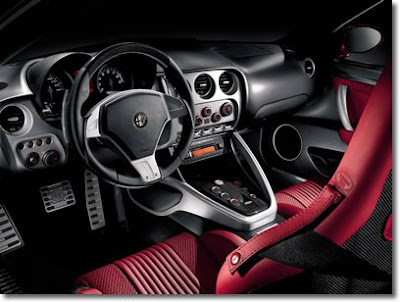
 The car shares its name with the Alfa Romeo 8C 2009 from 1934, which dominated the 1000 Miglia race in 1935-1938 and 1947. It was powered by an inline-8 engine.
The car shares its name with the Alfa Romeo 8C 2009 from 1934, which dominated the 1000 Miglia race in 1935-1938 and 1947. It was powered by an inline-8 engine.
Source: LeftLane
Alfa Romeo 8C Spider
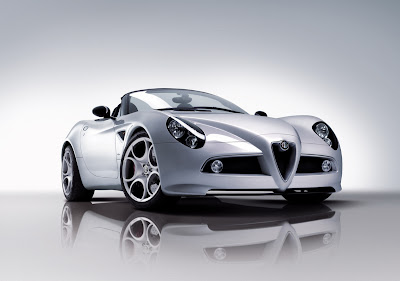
A drop-top version of the gorgeous 8C Competizione coupe, the Spider was seen at the Pebble Beach Concours d'Elegance in
The engine powering both coupe and convertible is from another Italian thoroughbred, Maserati's Quattroporte, although it's been enlarged to 4.7 liters of displacement. It makes 450 horsepower at 7,000 rpm, and 347 lb-ft of torque at 4,750 rpm, with a 7,500 rpm redline. The Ferrari-built motivator will be placed behind the front axle for a low center of gravity and ideal 50/50 weight distribution.
 The sole transmission choice will be a six-speed sequential manual with paddles, mounted as part of the rear axle for better weight distribution, as is the current vogue. The Q-Select gearbox will have five distinct modes: Manual-Normal; Manual-Sport; Automatic-Normal; Automatic-Sport and Ice.
The sole transmission choice will be a six-speed sequential manual with paddles, mounted as part of the rear axle for better weight distribution, as is the current vogue. The Q-Select gearbox will have five distinct modes: Manual-Normal; Manual-Sport; Automatic-Normal; Automatic-Sport and Ice.
The car's carbon-fibre body hides a steel unibody close to that of the Maserati coupe as well. The underbody was shaped in the wind-tunnel to reduce lift at the high speeds the car will no doubt be able to achieve without so much as breaking a sweat.
A high-threshold stability control system is on the cards as well, working with the double-wishbone suspension to keep the car on the road.
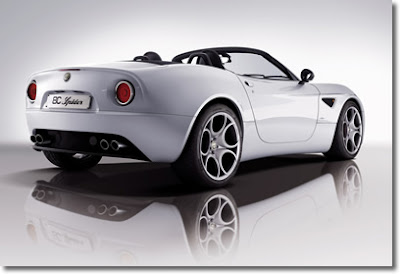 Tires are to be 20-inch versions of Pirelli's P-Zero Corsa, with six-piston, cross-drilled and vented brakes up front and four-piston rear brakes testing their traction abilities.
Tires are to be 20-inch versions of Pirelli's P-Zero Corsa, with six-piston, cross-drilled and vented brakes up front and four-piston rear brakes testing their traction abilities.
The car shares its name with the Alfa Romeo 8C 2009 from 1934, which dominated the 1000 Miglia race in 1935-1938 and 1947. It was powered by an inline-8 engine.
Specifications
| Brakes & Tires | |
| Front Suspension | 245/35 |
| Rear Suspension | 285/35 |
| Engine | |
| Displacement cu in (cc) | 4700 cc |
| Horsepower | 450 CV at 7.000 rpm |
| Maximum Torque | 7.500 rpm |
| Torque lb-ft (Nm) at RPM | N/A |
| Transmission | 6-Speed F1 |
| Type | 4.7-liter V8 engine |
| Exterior Dimensions & Weight | |
| Height | N/A |
| Length | N/A |
| Wheelbase | N/A |
| Width | N/A |
| Performance | |
| 0-60 mph | N/A |
| Top Speed mph (km/h) | N/A |
Base Price: $265,000
2007 Lamborghini Reventon
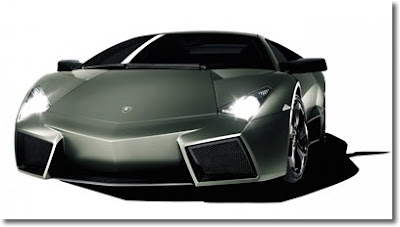
Clearly a Lamborghini, but nothing quite like it. A super car without equals: the Lamborghini Reventon is a road vehicle with an extreme specification and, at the same time, a limited edition masterpiece – a coherent style, angular with sharp lines, inspired by the very latest aeronautics.
With just 20 produced, each 1 Million Euro (without taxes) Lamborghini Reventon is a symbol of extreme exclusivity, yet still offering the extraordinary performance that makes the Reventon so unrivalled: under the completely autonomous design, the Reventon possesses the entire technical and dynamic competence of the twelve cylinder Lamborghini.
| Specifications | |||||||||||||||||||||||||||||||||||
Base Price: Approx. 1,000,000 € | | ||||||||||||||||||||||||||||||||||
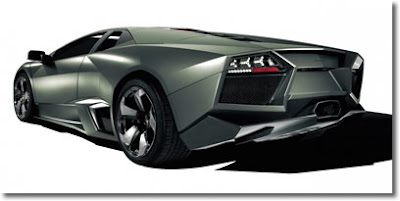
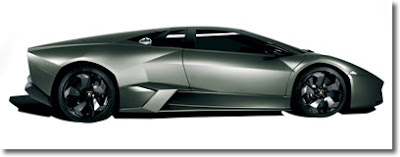
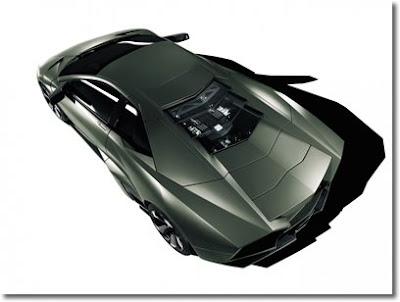 Born in Sant’Agata Bolognese
Born in Sant’Agata Bolognese
The Lamborghini Reventon has been entirely designed in Sant’Agata Bolognese, the original birthplace of the Lamborghini and the native home of every super car born under the sign of the bull. The design drawn up in Lamborghini’s Centro Stile (
The Lamborghini Reventon is not destined to remain a one-off. A total of 20 Lamborghini friends and collectors will be able to own this extraordinary car and, naturally, enjoy the incomparable pleasure of driving it.
The name Reventon has been chosen according to Lamborghini tradition. Reventon was a fighting bull, owned by the Don Rodriguez family. It is included in the list of the most famous bulls ever and is known for killing the famed bullfighter Felix Guzman in 1943.
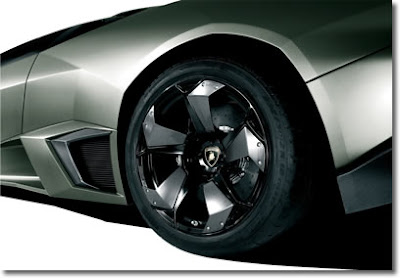 Made of Carbon Fiber
Made of Carbon Fiber
Although it is based on the extraordinarily successful Murcielago LP640, the exterior design of the Reventon is completely new. Just like the base model, the exterior is made of CFC, a composite carbon fiber material, which is as stable as it is light. The exterior components are glued and fixed to the body comprised of CFC and steel.
The front is characterized by the acute angle of the central ‘arrow’ and by the powerful forward-facing air intakes. Although they do not supply air directly to the turbine like an airplane, bearing in mind the 650 hp, an abundant volume of air is necessary to cool the carbon brake disks and the six cylinder calipers.
Characterised by Coherent Functions
Naturally, both doors on the Reventon open upwards – since the legendary Countach this has also been a symbol of the V12 Lamborghini product line. With their asymmetric configuration, the large air intakes below the doors provide an example of the extreme coherence with which a Lamborghini fulfils its function: on the driver's side it is large to increase the flow of oil to the radiator. On the passenger’s side of the vehicle, the air intake is flat because in this case, it only has to ensure the flow below the floor. The aerodynamically optimized flat floor structure terminates at the rear with a diffuser featuring an accentuated shape. This guarantees excellent road grip and stability even at 200 mph.
A Masterpiece with Tested Technology
The technology found in the Murcielago LP640 has not been modified. The engine in the LP640 forwards is the classic twelve-cylinder engine with 6.5 liter displacement. Only for this car, Lamborghini guarantees, an astounding 650 bhp at 8,000 revolutions per minute (rpm). The huge torque, equal to maximum 487 lb-ft, ensures a powerful switch from any number of revolutions: even the slightest pressure on the accelerator is spontaneously transformed into thrust. The robotised e.gear changes gear faster than even the most expert driver. In addition, the permanent Viscous Traction four-wheel drive system ensures that every force is constantly translated into movement.
With the Lamborghini Reventon, Lamborghini has done it again; it has created an unequalled super car; the perfect synthesis between the exclusivity and appeal of a limited edition design masterpiece, and the dynamism and driveability of a standard sports car. Thus, the Lamborghini legend is further enhanced by another, stylish future classic.
2009 Subaru WRX STi 330S
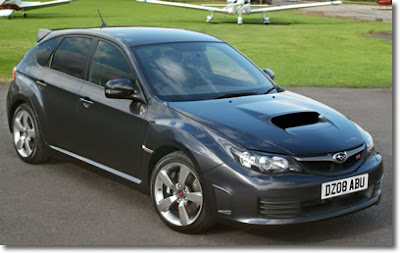
The new Subaru WRX STi 330S, just announced for a UK release at the British International Motor Show, is exactly the car last years WRX STi should have been. Put it slightly more drastically, and the WRX STi 330S is the car Subaru needed. The polarizing new "standard" STi has more buyers turning toward Mazda and Mitsubishi, and the once-lofty WRX brand has now been victim to descriptions such as a "tuner Corolla." Not exactly what Japanese AWD specialists Subaru had envisioned.
The Subaru WRX STi is at or near the top of every young car fan's list, and with good reason. The Subaru WRX series, in the last 10 years or so, has provided unmatched driving excitement in its base price point, and the WRX STi takes the formula even further, creating a true hardcore sports car that happens to come in four-door compact form.
This is why many Subaru diehards and automotive fans were more than a little disappointed when the other Blue Oval decided to soften the WRX and WRX STi for 2008, in attempt to make strides in ride comfort and mainstream styling, a move not embraced by many of Subaru's most vocal fanatics and critics.
The 2009 Subaru WRX STi 330S, set for a
Other nice touches include leather-trimmed Recaro racing seats, and burnout-ready 245/40 R18 tires mounted on beautiful 18 inch alloys. Look for design cues from the Subaru WRX STi 330S to be incorporated into the soon-to-be-announced 2009 Impreza line.
| Specifications | |||||||||||||||||||||||||
Base Price: £30,000 | | ||||||||||||||||||||||||
Read on for full official details, direct from the British International Motor Show... HIGH-PERFORMANCE HAT-TRICK FROM SUBARU
HIGH-PERFORMANCE HAT-TRICK FROM SUBARU
[Press Release]
* Three new high-performance Special Edition Imprezas
* 255 PS Impreza WRX-S at £22,495 OTR
* 330 PS Impreza WRX STI 330S for around £30,000 OTR
* Ultimate 380 PS Impreza WRX STI 380S concept
Subaru has scored a high-performance hat-trick for the British International Motor Show with the launch of no less than three new Special Edition new-shape Impreza models – two of which can be seen at the show.
All receive Prodrive engine upgrades plus comfort and styling tweaks, giving enthusiasts an unprecedented choice of sporty Subarus.
The 255 PS Impreza WRX-S costs a highly-competitive £22,495 while the 330 PS Impreza WRX STI 330S will be priced at around £30,000 (both on-the-road). First deliveries are expected in September.
Still in concept stage is the 380 PS Impreza WRX STI 380S which could become available within the next six months pending positive customer response.
Visitors to the show (July 23 to August 3, ExCeL,
Impreza WRX-S Offers More Power And Style
Based on the new Impreza WRX, the 'S' model offers £4,500 worth of extras for a £2,500 premium, costing £22,495 OTR.
Banbury-based Prodrive has re-programmed the 2.5 litre 'boxer' engine's ECU (electronic control unit) and modified the exhaust system. This sees power leap from 230 PS at 5,200 rpm to 255 PS at 5,400 rpm while the torque improvement is even greater, growing from 236 lb.ft at 2,800 rpm to 287.6 at 3,000 rpm – a staggering 51 lb. ft more.
Maximum speed remains at 130 mph but the 0-60 mph time drops from 6.1 seconds to 5.5 seconds. Naturally, in-gear flexibility is greatly enhanced.
The new Impreza WRX-S also boasts 18x7.5 ins anthracite GT1 alloy wheels with 225/40 tyres, an STI front grille, STI front lip spoiler and STI rear wing and body-colour tailgate moulding.
Also standard is a MOMO 'Air-Race' gearknob while the colour choice is between San Remo Red, WR Blue Mica, Obsidian Black Pearl and Satin White Pearl.
Standard equipment on the Impreza 2.5 WRX-S includes front and rear spoilers, side skirts, a rear diffuser, leather-covered steering wheel, all-wheel drive, a rear limited-slip differential with Subaru Vehicle Dynamics Control, 10-speaker, six-disc radio/CD player and xenon headlamps.
Impreza WRX STI 330S Brings Back The Burble
The new Impreza WRX STI 330S also benefits from a Prodrive Performance pack with modified ECU and exhaust system – this time with paired twin 90 mm diameter stainless steel exhaust pipes to bring back the burble so loved by 'scooby' fans.
Power goes up to 330 PS at only 5,400 rpm compared to the 300.5 PS at 6,000 rpm of the standard model.
Torque is boosted from 300.2 lb ft at 4,000 rpm to 346.6 lb ft at a lower 3,400 rpm making for an even swifter, effortless driving experience.
Top speed is the same 155.3 mph but the 0-60 mph time drops from an already swift 4.8 seconds to only 4.4 seconds.
Expected to be priced at around £30,000 OTR, the new Impreza WRX STI 330S has an especially luxurious specification – even compared to the already well-equipped standard STI which costs £26,595 OTR.
Upgrades include leather-covered Recaro front seats, satellite navigation, Smart-entry and push-button start.
Visually, the new special-edition sports new five-spoke 18x8.5 ins alloy wheels wearing 245/40 R18 tyres. It will be available in the full range of STI colours.
Standard equipment on the Impreza WRX STI includes a six-speed gearbox, Si-Drive giving three different engine response modes, a Multi-mode Driver Control Centre Differential, Subaru Vehicle Dynamics Control and – of course – symmetrical all-wheel drive with front and rear limited-slip differentials.
Show-Stopping WRX STI 380S Concept
Sure to be a crowd-puller is Subaru's range-topping special edition Impreza WRX STI 380S which previews at the London International Motor Show.
Dubbed a concept, the STI 380S could reach dealers within six months pending positive response. Its final specification will be finalised following customer input and will be hand-built to order.
The STI 380S will include a complete engine rebuild by Prodrive with many up-rated components to reliably achieve the target 380 PS.
Improvements over the standard Impreza WRX STI will include uprated suspension and exhaust system plus an enhanced body kit.
Other visual changes will be the option of either gold or silver-coloured 18x8.5 ins BBS alloy wheels with 245/40 tyres.
Source: RSportscars
2006 Saleen S7 Twin Turbo
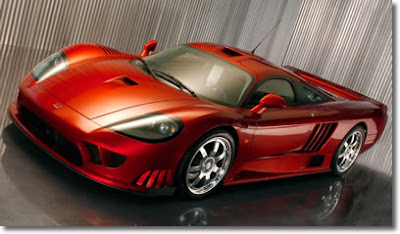
Saleen knows all about power. As in S281 Mustangs, N2O Focuses and the S7,
Saleen is not an organization content to rest on yesterday’s 0-60 mph times or quarter-mile speeds. So in 2005, it was “goodbye S7” and “all hail the S7 Twin Turbo!” This is the first major change to the S7 since its introduction, and it is a big change as in 750 horsepower and 700 lb-ft of torque, numbers the competition will be chasing for a long while we predict.
Unchanged From 2005
While there are a number of different roads Saleen’s engine designers could have traveled down to achieve those high-altitude horsepower and torque figures, for this second edition of the S7 they decided to think beyond atmospheric. And because this is Saleen, they added a double twist to a tried and true racing technique for boosting power and torque: twin turbos.
Aerodynamics has also come under scrutiny in 2005. Unless you place the new S7 Twin Turbo next to one of the original 2002 models, you probably won’t notice that the 2005 version has a different diffuser/rear spoiler package and reshaped front fenders to enhance the S7s already sleek, swoopy and aerodynamic contours. To complement the Twin Turbo’s enhanced straight-line performance envelope the S7 chassis has also undergone a fair amount of tweaking. Virtually every suspension pickup point has been changed, and the suspension geometry has been modified for less squat and dive during acceleration and braking.
Engine & Drivetrain
Designed by Saleen engineers, the S7's engine and drivetrain incorporate the latest in modern racing technology. The new all-aluminum V8 engine casting was engineered and tooled by Saleen to displace seven liters. Redline is 6500 rpm. Space age materials and engineering are used throughout, including stainless steel valves, titanium retainers, beryllium exhaust valve seats, an aluminum throttle body, Saleen designed aluminum CNC-machined cylinder heads and stainless steel exhaust system. An exclusive
d to the twin ball bearing turbos, is pressurized to 5.5 psi max and then passes through an oval-bore throttle body into an aluminum intake manifold with eight individual runners.
To feed juice to this setup, the injection system includes dual electric fuel pumps and high-capacity, return-less, 52 lb/hr fuel injectors. Neatly engineered and integrated into the S7’s stainless steel, dual, high-flow exhaust system are two, twin-ball-bearing, water-cooled Saleen-Garrett turbos, featuring 44-mm wastegates. The four exhaust
pipes from each bank of cylinders merge into a race-car-like high-efficiency collector. In addition, the exhaust incorporates dual catalysts per cylinder bank, EGR and those aforementioned twin wastegates. And because Saleen believes in power and clean air, the emission control system features dual, heated oxygen sensors per cylinder bank and a high-volume evaporative emission system along with those four catalysts. Oh, and for good measure and clean air, the system is OBD-II compliant.
And if you need any more proof of how Saleen engineers sweat the details, the stroke of the already short-stroke shifter has been furthered shortened for improved shifting feel. Say that five times fast, once for each gear change.
Chassis, Suspension & Brakes
The S7 chassis and suspension incorporate decades of Saleen’s experience in racing, racecar construction and high-performance road car manufacturing. The Saleen S7 architecture begins with a space frame chassis to which honeycomb composite reinforcing is grafted. The body is structural, aerospace-quality, autoclave carbon fiber. Suspension is via fully independent unequal-length double wishbones with coilover springs, lightweight aluminum dampers (shock absorbers) and stabilizer (anti-roll) bars front and rear. The uprights at each corner are CNC machined billet aluminum, flow-through designs that use air to help cool the bearings.
Chassis tuning also includes revised shock valving front and rear. Saleen-engineered Brembo-supplied lightweight aluminum six-piston mono-block calipers are fitted front and rear.
Geometry changes, along with new tires, result in about a 30 percent increase in mechanical grip... which is substantial. In a seeming contradiction to current performance tire practice, the 2006 S7 Twin Turbo is fitted with “taller” tires, 275/35 R19s up front and 335/30 R20s at the rear, replacing the 275/30 R19s and 345/25 R20s fitted to the normally aspirated S7. While the Michelin Pilot Sport PS2 tires have higher aspect ratios, they also lay tire patches that are nearly an inch wider up front and almost 1.5 inches wider at the rear.
 Exterior & Interior
Exterior & Interior
The S7’s beautiful shape was “designed” by the wind. Optimal aerodynamics and top speed performance objectives were achieved with extensive wind tunnel work. Targets included a low coefficient of drag, optimum drag-to-lift ratio, and extreme down force. The S7 has “full tray” body sculpting underneath.
For the 2006 S7 Twin Turbo, the redesigned front and rear diffusers, along with the new rear spoiler, result in a 40 percent reduction in aero drag and a 60 percent increase in down force. Those of you who know anything about aero forces recognize the significance of that last statement. Typically, you would have to trade down force to reduce aero drag.
The mid-engine Saleen S7 has front and rear trunks and comes with Mulholland Brothers custom-made, 3-piece, fitted luggage. In true supercar style, the doors open up and away from the body. Seats and other interior surfaces are covered in elegant leather and suede. Air conditioning, power windows, power door locks with remote keyless opening for the doors and both trunks, an electric-headed front windshield, variable intermittent windshield wipers, a leather-wrapped steering wheel and an AM/FM/CD/DVD/TV system are all standard. The Saleen S7 also has one unique interior feature: a video “rearview mirror” — there is a small video camera inconspicuously mounted in the rear of the car.
Seats and other interior surfaces are covered in elegant leather and suede. Air conditioning, power windows, power door locks with remote keyless opening for the doors and both trunks, an electric-headed front windshield, variable intermittent windshield wipers, a leather-wrapped steering wheel and an AM/FM/CD/DVD/TV system are all standard. The Saleen S7 also has one unique interior feature: a video “rearview mirror” — there is a small video camera inconspicuously mounted in the rear of the car.
| Specifications | |||||||||||||||||||||||||||||||||||
Base Price: $585,000 | | ||||||||||||||||||||||||||||||||||
Source: RSportscars
2008 Porsche 911 GT2
With a stunning 530 turbocharged horsepower and the most revolutionary design in the industry, Porsche revealed its most powerful production 911 ever on
New features such as large air intakes at the front and the rear wing, coupled with the rear-wheel drive and manual six-speed gearbox, express the elite performance abilities that are exclusive to this outstanding model. This high-performance athlete accelerates to 60 mph in just 3.6 seconds and reaches a top track speed of 204 mph.
530-Horsepower Twin-Turbo Engine
The power unit of the new 911 GT2 is based on the six-cylinder boxer engine of the 911 Turbo, with air supply driven by two exhaust gas turbochargers featuring variable turbine geometry (VTG). The 3.6-litre boxer engine achieves a maximum output of 530 (SAE) horsepower, an increase of 50 horsepower from the previous 911 GT2. The power increase is provided by two turbochargers with a larger compressor wheel and a flow-optimized turbine housing raising turbocharger pressure to an even higher level.
Decreased Fuel Consumption
The new 911 GT2's expansion intake manifold, which uses oscillating air in the intake during the cooler expansion phase, keeps the temperature of the fuel/air mixture even lower than in the 911 Turbo. This results in a significant increase in all-round efficiency, with fuel consumption down by up to 15 percent under full load despite the increase in engine output. This is a genuine innovation for turbocharged power units.
Functional Design Features
A number of elements set the new 911 GT2 apart including the new achievements in emission management and control. This is the first Porsche homologated for the road to feature a muffler and tailpipes made of titanium as standard equipment. This expensive material reduces weight by approximately 50 percent vs. a comparable component made of stainless steel.
The new 911 GT2 comes as standard with PCCB brakes featuring brake discs made of a composite carbon fiber/ceramic compound ensuring highly consistent and maximum stopping power. Also standard is the electronically controlled Porsche Active Suspension Management (PASM) system.
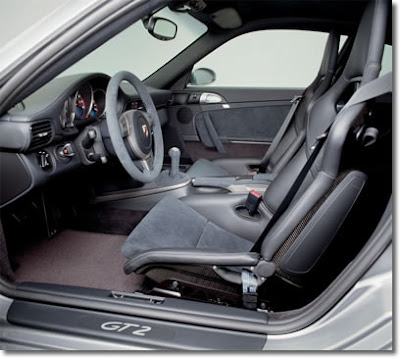 The GT2 comes on 19-inch light-alloy wheels filled with 235/35 ZR19 front sport tires and 325/30 ZR19 rear sport tires. It is scheduled to make its North American debut in early 2008 at a
The GT2 comes on 19-inch light-alloy wheels filled with 235/35 ZR19 front sport tires and 325/30 ZR19 rear sport tires. It is scheduled to make its North American debut in early 2008 at a
| Specifications | |||||||||||||||||||||||||||||||||||
Base Price: $191,700 / 189,496 € | | ||||||||||||||||||||||||||||||||||
Source: RSportscars
2009 Mitsubishi Lancer Ralliart
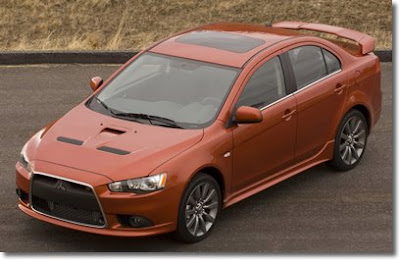
Filling a performance hole left between the ho-hum 2009 Mitsubishi Lancer and the scorching 2009 Lancer Evolution, the Mitsubishi Lancer Ralliart offers desirable specs in the performance department at a price that fills the sweet spot in Mitsubishi’s lineup and poses the AWD small sports sedan as a direct competitor to the new 2009 Subaru WRX.
The Lancer Ralliart’s engine has quite a pedigree, being the same basic 2.0 liter block and head used in the Lancer Evolution, though detuned, with less boost, for application in the Ralliart. An interesting inclusion at this price point is Mitsubishi’s TC-SST transmission, a paddle shifted, dual clutch sequential manual.
The styling is more Lancer Evolution than Lancer throwaway econobox, and manages to maintain the snarling look of the Evo while staying subdued enough to appeal to compact sports car fans who may be turned off by oversize hood scoops and picnic table rear spoilers.
This is not to say that the Lancer Ralliart is conservative in any way. Think of it as the Lancer Evolution on a diet: plenty of performance, chiseled and eye-catching design, and a price and driving dynamics that anyone can appreciate.
| Specifications | |||||||||||||||||||||||||||||||||||||||||
Base Price: $27,000 | | ||||||||||||||||||||||||||||||||||||||||


[From Mitsubishi Press Release]
The new Lancer Ralliart reinforces the sporty identity of the Lancer lineup (Lancer, Lancer Ralliart and Lancer Evolution) with aggressive styling and driving performance that creates a unique product between the Lancer GTS 2.4 and the Lancer Evolution models. The Lancer Ralliart makes effective use of the Lancer's rigid unibody and four-wheel independent suspension by mating this capable chassis to a turbocharged engine and all-wheel-drive.
 Mechanical
Mechanical
Lancer Ralliart is powered by the new 4B11 2.0-liter DOHC MIVEC intercooled and turbocharged engine (also used in the Lancer Evolution) that develops an estimated 235 horsepower. The engine is mated to Mitsubishi's efficient Twin Clutch-SST gearbox that helps enhance the sporty nature of the vehicle by allowing the driver to execute lightning-quick, silky-smooth, paddle-actuated shifts. The TC-SST transmission also operates in fully automatic modes for
The Lancer Ralliart's full-time 4WD driveline features Mitsubishi's Active Center Differential (ACD). The ACD unit employs an electronically controlled multi-plate clutch center differential, vectoring drive torque to the front and rear according to different driving conditions to realize the best balance between steering response and traction characteristics on Tarmac, Gravel, or Snow surfaces. Lancer Ralliart is also equipped with front helical limited slip differential and a rear differential mechanical limited slip differential.
Design
Elaborating on the basic sporty design and proportions of the Lancer, the Lancer Ralliart exterior is distinguished by its more aggressively styled front bumper design, rear bumper cover, dual outlet muffler and a lightweight aluminum, ducted hood that delivers cooling air to the turbocharger.
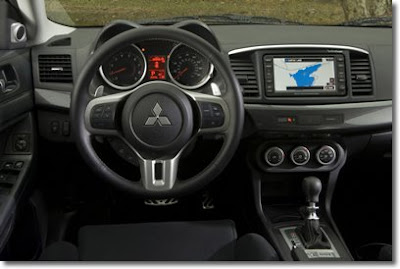
The interior design places greater emphasis on function and vehicle control. Lancer Ralliart is equipped with FAST key, Bluetooth® hands-free telephone interface, the same Twin Clutch-SST shifter used on Lancer Evolution, and easily accessible steering column mounted paddle shifters.
Available equipment and options to include: Recaro seats, HID headlights, 650-watt Rockford Fosgate 9-speaker audio system, Sirius satellite radio, power sunroof, and a 30-gigabyte hard drive navigation system with digital music server.
Source: RSportscars
2007 Toyota FT-HS Concept
Pairing a potent hybrid powertrain with essential sports car fundamentals, the FT-HS concept was a joint undertaking of Calty,
"Drivers today are not satisfied with cars that are simply fast," said Kevin Hunter, vice president, Calty Design Research. "In addition to driving enjoyment, today's drivers are concerned about safety, ecology and social responsibility."
The FT-HS incorporates hybrid capability while maintaining sports car essentials, such as a sleek profile, lightweight aero-dynamic materials, and an advanced high-output powertrain for revolutionary acceleration and optimal performance. This 21st century sports car is fun-to-drive with eco-friendly benefits such as ultra-low emissions and fuel efficiency. The FT-HS appeals to an emerging buyer who grew up eco-conscious and per
ceives technology as a necessity, not a luxury.
This two-plus-two concept is a front-engine, rear-drive sports car with a projected zero-to-60 acceleration in the four-second range. A powerful V6, 3.5L-engine is coupled with a 21st century sports hybrid system with a target power output of approximately 400-horsepower. At a mid-priced market position, FT-HS would be a true "attainable exotic" with 21st Century performance.
FT-HS expresses the core values of a Toyota Brand design strategy that combines two key elements: J-Factor and Vibrant Clarity. J-Factor refers to the local and global acceptance of Japanese-inspired design and cultural sensibilities. Vibrant Clarity is the design language used to express the J-factor much in the same way that L-Finesse is the language of the Lexus Division. It is the combination of perfect imbalance, freeform geometrics and integrated component architecture. The result of these three elements is subtractive mass, a minimalist style that is not only lightweight, but also looks lightweight.
The exterior design was led by Calty designer, Alex Shen. From a design perspective, the theme of the FT-HS achieves sleek, taut surfaces in its exterior features – especially in the doors and body style. The front and rear have been sculpted to remove mass around key functional components. Freeform geometrics define the integration of fluid surfaces contrasting hard-edge "Aero-Corners" which promote smooth airflow and reduce turbulence.
The roof has a distinctive scooped-out section designed to reduce aerodynamic drag and provide head room at the key areas. Made from carbon fiber Kevlar, the roof retracts so that the roof panel and back window pivot fluidly in a downward motion to stow in the rear seat space.
The vehicle's triangular profile has a floating "C" pillar, aero corners, a full upper-body pan, and innovative open top. A hood features a scalloped channel, exposing the hybrid engine. Integrated component architecture can be seen in the aeros
pace-inspired lighting. The tail lamp unit spans the entire rear, and has an integrated retractable spoiler. Light-emitting diode (LED) clusters are located in the headlamps and the wing for energy-efficiency and decreased heat loss. Other exterior features include a speed-activated wing that elevates at high speed for additional stability and traction. The rear showcases a carbon fiber lower diffuser with integrated wide exhaust and carbon fiber wheels.
The driver-oriented interior was created by Calty designer, William Chergosky and exudes sleekness, technology, and performance. The lean skeletal look is achieved with exposed cross-car architecture and high-tech materials such as carbon fiber, and titanium. FT-HS' interior features create a dedicated driver's cockpit which include subtractive mass expressions such as cross-car instrument panel structure and delta wing driver pod. The delta-wing driver's pod integrates many useful functions into a lightweight structural unit. All of the important functions and details are presented almost exclusively to the driver. For example, touch-trace sensors which surround the driver and act as tactile guides for fing
er controls when traveling at high speeds.
By eliminating the "B" pillar and creating a suspended "C" pillar, the minimalist style works in conjunction with subtractive mass. An integrated instrument panel surrounds the driver, creating an enclosed pod effect. Armrests flow seamlessly into the door and surrounding interior.
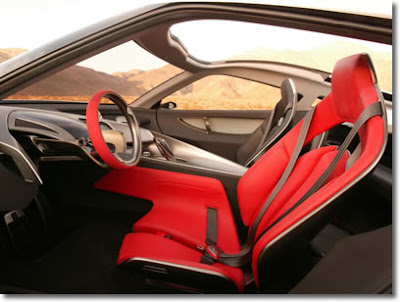 Seating is optimized for a lightweight appearance and function: the seating accommodates four and then coverts to a two-seater when the roof retracts. The passenger-seat area is open with a simple exposed airbag on the cross-car beam.
Seating is optimized for a lightweight appearance and function: the seating accommodates four and then coverts to a two-seater when the roof retracts. The passenger-seat area is open with a simple exposed airbag on the cross-car beam.
A telescoping hub-less steering wheel incorporates semi-automatic paddle shifters and allows the meter to be shifted forward in order to shorten the driver's focus-time between the road and meter, and ultimately enhance driver focus.
“FT-HS redefines the sports car experience not only with styling but also in function and performance,” said Hunter. “The FT-HS is
2009 Mercedes-Benz-SLK-Class-(SLK280,-SLK350)

Mercedes-Benz first launched its SLK roadster in 1997. A second-generation version was revealed for 2004, and a modest facelift to that model was introduced for 2008.
SLK -- which means Sportlich (sporty), Leicht (light) and Kurz (short) -- is positioned below the considerably more expensive SL roadster. The SLK was actually Mercedes' first hardtop convertible roadster, predating the SL hardtop.
The SLK competes with the BMW Z4, Audi TT, Infiniti G37, and Lexus SC 430. The only non-AMG SLK model offered in North America is the SLK 350, which is powered by a 305 horsepower 3.5L V6.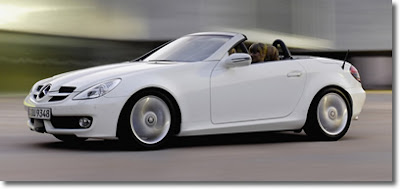
The 2004 redesign brought the introduction of a Formula One-inspired appearance and significant performance improvements. The 2008 update builds on this with a revised front fascia with more design cues from the German automaker's Formula One cars.
New taillights and a revised interior complete the SLK's update. The SLK 350 comes standard with Mercedes' 7G-TRONIC Sport seven-speed automatic. The transmission has a manual control mode operated via F1-style paddle shifters.
MECHANICAL
3.0L DOHC SMPI 24-valve V6 engine
6-speed manual transmission-inc: direct-action short throw shifter
Electronic stability program (ESP)
Rear wheel drive
Independent 3-link front suspension-inc: co
il springs over gas-pressurized shock absorbers, anti-dive geometry
Independent 5-arm multi-link rear suspension-inc: separate coil springs, shock absorbers, anti-squat geometry, alignment control
Front/rear lowered ride-height & stabilizer bars
17" x 7.5" front 6-dual-spoke aluminum wheels
17" x 8.5" front 6-dual-spoke aluminum wheels
P225/45R17 front high performance tires
P245/40R17 rear high performance tires
Vehicle-speed-sensitive pwr rack & pinion steering w/direct-steer system, integrated hydraulic damper
1-piston ventilated front & 2-piston solid rear disc brakes
Anti-lock disc brakes system (ABS) w/brake assist system
EXTERIOR
Electro-hydraulic retractable steel hardtop
Formula 1-style nose w/color-keyed grille crossfins
Variable-focus halogen headlamps-inc: polycarbonate lenses, light-sensing auto-on headlamps, automatic lamp substitution
Halogen front fog lamps
Single rear red fog lamp
Driver-programmable daytime running lamp
s
Pwr heated mirrors w/integrated LED turn signals
Variable intermittent aero-blade windshield wiper
Red & smoked-tinted rear lamps w/LED brake & tail lamps
INTERIOR
Leather seat trim
8-way adjustable sport seats w/silver painted magnesium trim, height adjustable head restraints
Center console w/enclosed storage
Retractable dual cupholders
Velour carpeting & floor mats
Stainless-steel door sill trim
Rubber-studded brushed stainless-steel pedals
3-spoke leather-wrapped 4-way tilt/telescopic sport steering wheel-inc: audio controls, multi-function display controls
Black gauges w/white markings, silver instrument tubes
Electronic analog speedometer, tachometer, fuel level, quartz clock
Digital odometer, Touch Shift gear & mode s
election
Multi-function display in instrument cluster-inc: trip computer, exterior temp gauge, digital speedometer, coolant temp, maintenance system, audio status, reminder & malfunction messages, driver-programmable settings
Mercedes-Benz Maintenance System Plus display-inc: distance remaining to next maintenance, type of service due, reminders, brake-pad wear
Audible reminders & messages-inc: exterior lamp failure, low fuel, engine oil, coolant, washer fluid, release parking brake, headlights on, remove key from ignition
Touch turn signals (flashes (3) times w/1-touc
h)
Tire pressure loss warning system
Pwr windows-inc: 1-touch express up/down, 1-button raising/lowering of all windows via pwr top switch
SmartKey system-inc: remote central locking system, anti-theft engine immobilizer, drive away automatic locking
SmartKey infrared remote-inc: trunk open, panic alarm, fuel filler door, selective unlock
Bluetooth hands-free communication
Cruise control
Anti-theft alarm system
Tele Aid global positioning system (GPS) satellite system-inc: stolen vehicle recovery, remote door unlock service, automatic alarm & collision notification
AM/FM/Weatherband radio w/in-dash 6-disc CD changer, fiber-optic communication among components
Illuminated glovebox
Automatic dual-zone climate control-inc: dual rotary controls, electrostatic dust & pollen filters, active charcoal filter, REST mode w/engine heat recirculation feature or cabin ventilation, dash-top diffuser vent
Rear window defroster w/auto-shutoff based on time & driving speed & exterior temp
Silver trim
Courtesy lamps w/delay shutoff
Dual front reading lamps
Night security illumination
Locator lighting
Leather-wrapped shift knob
Parcel net in RH footwell
Pockets in doors
Illuminated carpeted trunk
Enclosed storage on rear cabin wall
City 17/hwy 26 (3.0L engine/6-speed manual trans)
City 19/hwy 26 (3.0L engine/7-speed auto trans)
Anti-lock disc brakes system (ABS) w/brake assist system
Driver & front passenger dual-stage airbags w/Occupant Classification System
Head & thorax side-impact airbags
Knee air bag
3-point shoulder belts w/emergency tensioning device (ETD) & belt force limiter
Electronic stability program (ESP)
Illuminated emergency interior trunk release
Driver-programmable daytime running lamps
Source: LeftLane
2009 Maserati GranTurismo S
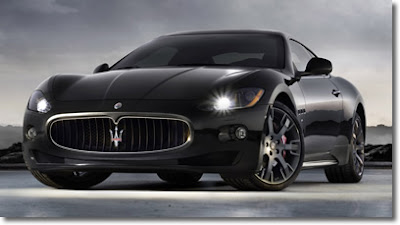
A year after the unveiling of the GranTurismo, Maserati will be back at the Geneva International Motorshow with yet another world premiere, the GranTurismo S. The ultimate expression of the Trident coupé's sportiness shifts the emphasis onto performance and driving enjoyment.
Two main novelties are at the heart of the new Maserati: the 440 HP V8 4.7 engine and the electro-actuated gearbox with fast MC-Shift arranged in the Transaxle layout typical of high-performance sports cars that represents the technological DNA of all Maseratis.
The GranTurismo S makes use of the high-performance brake system developed in collaboration with Brembo and introduced for the first time in the automotive field on the Maserati Quattroporte Sport GT S. The system features front brake discs made with dual-cast technology - a dual casting of cast iron and aluminum, paired with aluminum mono-bloc 6-piston brake calipers, ensuring optimized braking performance.
| Specifications | |||||||||||||||||||||||||||||||||||
Base Price: $130,000 | | ||||||||||||||||||||||||||||||||||
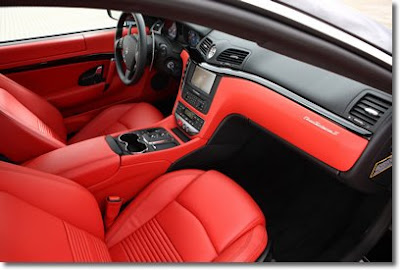 The interior upholstered in Poltrona Frau leather and Alcantara reflects the sporty flair of the Maserati GranTurismo S; the figure-hugging front and rear seats are distinguished by their new dynamic design with horizontal piping on the seats and seatbacks
The interior upholstered in Poltrona Frau leather and Alcantara reflects the sporty flair of the Maserati GranTurismo S; the figure-hugging front and rear seats are distinguished by their new dynamic design with horizontal piping on the seats and seatbacks
Source: RSportscars
2009 Lamborghini Gallardo LP560-4
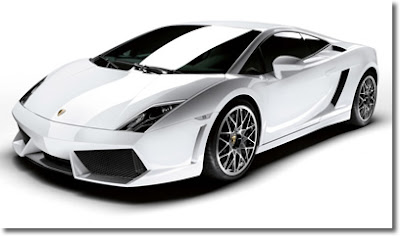
A Lamborghini is and always will be a highly efficient athlete. Its extreme sensuality is based upon precision, performance and on spontaneous action. A Lamborghini’s elegance is that of stark, purist strength. This DNA of the Lamborghini brand is being continuously developed by the Centro Stile in every new car. Thus the Gallardo LP560-4 displays the precise lines and clean surface edges in its distinctly minimalist design. Ornaments or embellishments of any form are alien to it.
Evolution of form systematically follows the demands of function: the newly designed front of the LP 560-4 squats deeply to the ground which contributes to its aerodynamic efficiency. The enlarged and clearly accentuated cooling intakes meet the demands of augmented engine power thus increasing the air circulation vital to a vehicle as powerful as this. The spoiler, positioned low between the air intakes, improves aerodynamic equilibrium at high speeds.
Characteristic LED – Daytime running light
The new headlights have a characteristic ‘daytime’ running light integrated beneath the Bi-Xenon lamps: 15 diodes (LED) have been positioned in a Y structure. The same motif appears again in the rear tail-lights. The stop and brake lights have been inspired by the Miura Concept, the Murciélago LP640 and the Reventón and display the Y form three times over.
The completely redesigned rear gives the definition “powerful elegance” a new meaning: rear lights, air cooling vents, bumper and diffuser are arranged in precise positions on the car’s exterior, which make the LP560-4 appear extremely wide and bonded to the road surface. In addition, the streamlined covers left and right of the engine hood accentuate the powerful shoulders and lengthened, stretched lines of the new Gallardo.
Clearly improved aerodynamics
The rear diffuser has been newly designed, is more efficient with respect to its predecessor and, together with the smooth underbody, contributes to the excellent steering stability even at extremely high speeds. In sum, the aerodynamic efficiency with regard to output compared to that of its predecessor has been increased by 31 %. The Gallardo LP560-4 takes fast curves even more supremely.
The designers in Sant’Agata Bolognese have excelled themselves with the clear-cut, pure, stark lines of the Gallardo LP 560-4. They also have demonstrated distinct attention to detail; the elaborate aluminium cap for petrol and motor oil are testimony to this, as is the rear camera which has been integrated in a small fin in the independent rear spoiler as well as the finely-crafted grille in the exhaust pipes.
Weight is undesirable in a sports car and a lightweight model encourages the dynamics of such a vehicle. Aluminium is much lighter than sheet steel and this is why the Gallardo LP560-4 is produced with a body in a much lighter but nevertheless more stiff structure: the two-seater car measures 4.34 metres in length, 1.90 metres in width and a mere 1.16 metres in height. It weighs in dry at 1410 kilograms - which is, effectively, 20 kilograms less that that of the previous Gallardo.
The construction of the Gallardo LP560-4 utilises what is known as a ‘spaceframe construction method’. Integrally moulded node elements and extruded parts create its frame, and sheet metal plates made out of aluminium have been neatly and securely integrated to form the body. The body is not only extremely light but also torsionally stiff and displays the highest safety characteristics. Thus the basis for the extraordinary handling characteristics of the LP560-4 is formed.
Integrated Pedestrian Protection system
The body of the car also demonstrates extremely high levels of ‘passive security’. The Gallardo LP560-4 fulfils the not yet obligatory European directives regarding the protection of pedestrians. Furthermore, the geometry of the entire front of the car has been optimised with the addition of a special combination of materials behind the front bumper which serve to absorb any impact energy.
The Interior
Luxurious individuality
Despite its low exterior height, the Gallardo LP560-4 welcomes its passengers with a spacious interior. The sports seats are covered with either fine leather or Alcantara® (upon request) and provide secure adherence and support. The position of the seats is very low, typical for sportscars. There is space behind the seats for luggage which complements the 110 litre front trunk.
The wide middle console is one of the elements which characterizes the impression of sporty dynamism in the interior. It accommodates the standard Lamborghini multimedia system as well as the air conditioning which can be regulated on both the driver’s and passenger’s sides. Between both of these elements lies a newly designed module consisting of classically elegant flip switches. Seven round instruments in the cockpit with a new graphic provide the driver with essential engine data and a multifunctional display between the speedometer and revolution counter provides the driver with important information.
Workmanship of the highest quality
The Miura and the other models of the 60s were already characterized by the excellent quality of workmanship which lay far and above the general standards of that time. Lamborghini has continued this tradition and even today delivers automobiles of the highest standards. The Gallardo LP560-4 indulges with the highest quality, aesthetically pleasing materials. With regard to the leather interior, an array of different colours and stitching (also in contrasting colours) are available. As an optional, Lamborghini can deliver the Gallardo LP560-4 with a further choice of leather and Alcantara® interiors as well as Carbon Fibre Packages. Here, elements such as the air-conditioning surrounds, the control panel, the handbrake handle and the gear-stick surrounds are available in carbon fibre.
Furthermore, the individualisation program, Ad Personam, enables the customer to create any combination of colour and trim, thus creating a highly personalised vehicle. After all, the new Lamborghini should perfectly reflect the owner’s lifestyle.
The Engine
Extreme power in every situation
The engine of the Gallardo LP560-4 is a completely new development. All that remains of the original V10 is the number of cylinders which, in this performance category, create a perfect and unique synthesis of torque, force of movement, sporty nimbleness, compact size and low weight.
The engine has a 5204 cm3 volumetric displacement which, with 8.000 rpm creates the extreme 560 PS (412 kW). This results in the excellent performance per litre of 107.6 PS/lt. At maximum torque output, the engine yields 540 Newtonmeter at 6.500 rpm. The ample torque curve guarantees outstanding thrust from every engine speed. With an acceleration of 3.7 seconds from 0-100 km/h and a maximum speed of 325 km/h, the Gallardo LP560-4 shoots into the orbit of the most extreme and powerful sports cars.
Despite the clearly improved driving performance of this super sports car, Sant’Agata’s engineers were nevertheless able to achieve a reduction in fuel consumption and CO2emissions by 18 per cent. Measured by engine power and performance, the Gallardo LP560-4 e-gear’s average fuel consumption of 13.7 litres per 100 kilometers, is extremely low.
Perfect weight distribution, class-leading dynamics
The engine in this new model lies lengthways in front of the rear axle – hence the model description Longitudinale Posteriore. The concept of the mid - rear engine is unbeatable in sports car production, with the centre of gravity being displaced next to the vertical axis, thus creating the car’s exceptional dynamics. Furthermore, it creates the basis for the Gallardo LP560-4’s perfect weight distribution with 43 per cent on the front axle and 57 per cent on the rear. In combination with the permanent four-wheel drive transmission, superior driving stability and road adherence are guaranteed in all situations.
Reduced weight for inspirational torque
The crank case of the new ten cylinder of Lamborghini Gallardo is produced with an aluminium alloy. Separate cylinder liners are not necessary with this technology: instead, the liners, due to their exposure to the hard silicone crystals during the production phase, are bored directly out of the material. The connecting rods are made out of wrought steel and the pistons are produced from an aluminium alloy. The consequent reduction in weight, inertia and in friction losses contributes to the car’s inspirational torque.
The engine is unusually wide for a V10, with a cylinder angle of 90 degrees. A definite advantage of this construction is the low centre of gravity. The reduction of the gravity centre height comes also from the dry sump layout of the lubrication system which also guarantees the reliability of the oil supply even during lateral acceleration and on the race-track.
Direct fuel injection improves efficient combustion
The new V10 uses the direct fuel-injection system “Iniezione Diretta Stratificata” as an innovative way to optimize performance results in part-load conditions. Here, the fuel is injected directly into the combustion chamber through the laterally positioned injector. Combined with the use of a ‘tumble flap’ in the intake manifold runners, this solution guarantees an optimized distribution of the gasoline in the combustion chamber (higher gasoline density around the spark plug, leaner mixture close to piston and cylinder liners) and delivers the basis for a highly efficient combustion system even with stoichiometric mean mixture composition. The direct injection boosts the extremely efficient ‘full load’ performance of the V10, reduces its knock sensitivity and thus enables the very high compression ratio of 12.5:1. The cylinder heads have been optimised to deliver a very quick gas exchange and the variable valve control system on all four camshafts improves the charge efficiency across the entire engine speed range.
Transmission
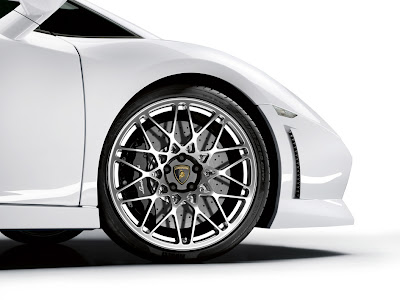
Such extreme power must be brought onto the streets with extreme reliability. The driver of a Gallardo LP560-4 can thus rely on the four-wheel drive Viscous Traction (VT) system, with the ‘4’ in the model name a reminder of this. Lamborghini already introduced this system with the Diablo VT in 1993 – and for good reason: four actuated wheels achieve more grip than two and permit acceleration earlier in the curve exit.
The protagonist in the transmission is the central viscous-coupling which requires no electronic control. In this special Lamborghini configuration, the driving torque is distributed between front and rear – generally with a 30:70 front to rear ratio and, within milliseconds, adapts to even the slightest variations in road conditions. A mechanical differential on the rear axle provides up to 45% limited slip and an electronic differential lock at the front complete the four-wheel drive system.
Superior traction and handling
Not only does the maximum traction take advantage of the permanent four-wheel drive system, but also the car’s clearly superior handling. Each wheel can only transfer a certain amount of torque to the road. As the propulsion power is distributed onto all four wheels through the viscous traction system, more potential for directional control remains - and reserves in every situation distinguish a perfectly made sports car.
Despite all the engine thrust, changing gears in the Gallardo LP560-4 is one of the most exciting experiences of driving this vehicle. It is still the customer’s personal preference as to whether he wishes to change gears manually through the exact ‘gate’ guides of the six-speed gearbox via the short gear stick, or whether he prefers to let his fingertips control the e.gear’s paddle-shift system located behind the steering wheel: the latter solution becoming the preference of the majority of Lamborghini customers.
Gear change time reduced by 40 per cent
The automated e-gear transmission has been completely redesigned and improved in all aspects. The complete system has not only been reduced in weight, but the time employed to change gears has also been reduced by 40 per cent in “CORSA” mode. The driver may choose between five different driving and changing programs: in addition to the ‘normal’ mode, the Gallardo LP560-4 offers a SPORT programm with its even more rapid gear changing times and increased number of revolutions.
The CORSA program directs the engine to optimum acceleration. It permits a greater slip angle and also allows - with maximum safety - the full dynamism of the LP560-4 to be enjoyed even on a race-track. The ‘Thrust Mode’ ensures maximum acceleration from neutral while the angle of the throttle valve and the clutch are here optimally adjusted to one another. Finally the Automatic mode: here the engine changes gear in total independence and permits a particularly comfortable mode of driving.
The Suspension
High-tech parts with Lamborghini know-how
Even the Gallardo LP560-4’s predecessor was one of the world’s best super sports cars with regard to handling, precision and driving stability. However, the latest model provides an even more intense driving experience: the new suspension improves the car’s handling, its driving comfort and its directional stability at high speeds.
The Gallardo LP560-4’s space frame is uncompromisingly high tech. Its technical production was conceived from motor sport technologies. The double wishbones made out of aluminium with newly designed kinematics, while the springs and shock absorbers are tightly adjusted for grip.
The rear axle now has an additional track rod which further improves the excellent control of this super sports vehicle. Newly developed elements are the rubber-metal bearings - authentic high-tech parts - which clearly improve the special Lamborghini driving dynamics with well-chosen material combinations and cleverly defined assembly.
Extreme road adherence
The steering rack works with relatively little assisted steering support, thus bonding the driver closely to the road. This in turn provides him with an intense experience of power and impulse. The steering has its own cooling system for the power steering fluid.
Precise, breathtakingly fast, whilst stable and free from surprises, the Gallardo LP560-4’s dynamics assures a sensuous experience. The LP560-4’s tyres (format 235/35 ZR 19 front and 295/30 ZR 19 rear) appear to bond with the asphalt. Specially developed Pirelli P-Zero series tyres are fitted: these have a particularly low roll resistance which also maintains tyre wear at a minimum without, of course, any reduction in their performance quality. At a speed of over 120 km/h an independently extended rear spoiler increases the downforce on the rear axle It acts in association with the specially formed underbody which directs the airstream under the car.
Optional Carbon Ceramic Brake system
The new braking system acts with brute force. At the front, eight ‘Brembo specialist’ cylinder callipers grasp the 365 mm diameter brake discs. At the rear, four cylinder callipers act on the 356 mm brake discs. In addition, the new disc ventilation system improves the stability in extreme situations. Optionally, discs made out of Carbon Ceramic are offered. At the front the CCB (Carbon Ceramic Brakes) discs measure 380mm in diameter and at the rear 356mm. They deliver much improved performance at a reduced weight. In total, the CCB braking system is lighter in weight that, at the wheel, improves driving dynamics and comfort.
The interior and trim
With the Gallardo LP560-4 Lamborghini provides its customers with a generous and sporty standard equipment package. Direct from the production line, a customer will find included in his vehicle passenger and lateral air-bags; a two-zone air-conditioning system with sun regulation; The Lamborghini Multimedia System including an USB connector; and sports seats with an electronically operated backrest. In addition to this, the interior trim includes fine leather and Bi-Xenon headlights with LED daytime running light. The car is supplied with new Apollo wheels as standard.
A large variety of options increases the interior comfort of the vehicle, including a navigation system and a module for TV reception, a hands-free Bluetooth® phone set, an anti-theft device and a rearview camera. A further option is the lifting system control of the front of the vehicle which, at the touch of a button, is raised to enable driving over obstacles. The new polished cross wheel rims ‘Cordelia’ or the black Y-rims ‘Callisto’ complete the options range. Finally, the engine hood made from glass creates a showcase for the heart of the Gallardo LP560-4..
The possibilities and different combinations available in the Individualisation Program Ad Personam are almost inexhaustible. Behind this program stands the philosophy that a super sports car of this nature should, after all, reflect the personality of its owner by enabling him to completely indulge his expectations and wishes. As a consequence, extreme exclusivity is the trademark of Lamborghini’s individualisation program. “Think the Impossible” states the motto. Ad Personam offers a host of options in order that a customer may give the car an imprint of his own style with respect to the interior trim and exterior. A new highlight in the program are the following three exclusive matt colours: Nero Nemesis (matt black), Bianco Canopus (matt white), Marrone Apus (matt brown). The new matt colours underline the clearly defined and purist precision of the Lamborghini design.
Technical data Frame & Body Frame: Structural aluminium spaceframe, based on aluminium extruded parts welded to aluminium casted joint elements. Body: Aluminium with thermoplastic ?hang on? parts Rear Spoiler: Electronically controlled Mirrors: External mirror with electrical closing system Suspension: Double wishbones front and rear suspension system, antiroll bar anti-dive and anti-squat ESP 8.0: Full ESP System with ABS,ASR and ABD Airbags Front: Front Dual Stage driver and passenger airbags, side Head-thorax airbags Wheels/Tyres Tyres (Front rear): Pirelli Pzero 235/35 ZR 19 – 295/30 ZR 19 Wheels (front-rear): Aluminium alloy, 8.5? x 019?- 11?x 019? Steering: Power- assisted rack and pinion Kerb-to-kerb turning circle: 11,50 m Brakes Steel brakes: Power vacuum, aluminium alloy callipers :8 cylinder front callipers and 4 cylinder rear callipers; Ventilated discs (front-rear) ø 365 x 34mm front –ø 356 x 32 mm rear CCB brakes: Power vacuum, aluminium alloy callipers :6 cylinder front callipers and 4 cylinder rear callipers; Ventilated discs (front-rear) ø 380 x 38mm front –ø 356 x 32 mm rear
Engine Type: 10 cylinders V90°, DOHC 4 valves, common-pin crankshaft Displacement: 5204 cc Compression ratio: 12,5 : 1 Maximum power: 412 kW (560 ps) at 8000 rpm Maximum torque: 540 Nm 6500 rpm Engine management system: Bosch MED 9 Cooling system: Engine and Gearbox radiator Cooling system oil: Oil to Water cooler Cooling system water: Two water radiators Emission control system: Catalytic converters with lambda sensors Lubrication system: Dry sump Drivetrain Type of transmission: Permanent 4-wheel drive with viscous traction system Gearbox: 6 Speed + reverse, A optional, robotized sequential e-gear system with actuation by paddles on the steering column Clutch: Double plate ø 215 mm Rear Differential: 45% limited slip Front Differential: Slip limitation by ABD function Performance Top speed: 325 km/h Acceleration (0-100 km/h): 3,7 sec. Acceleration (0-200 km/h): 11,8 sec. Dimensions Wheelbase: 2560 mm Overall length: 4345 mm Overall width: 1900 mm Overall height: 1165 mm Track (front– rear): 1632 mm – 1597 mm Kerb Weight: 1500 Weight distribution (front-rear): Front 43% - rear 57% Capacities Engine oil: 10 litres Fuel tank: 90 litres Engine coolant: 20 litres Consumption with E-Gear Urban: 21 L/100 km Extra urban: 10 L/100 km Combined: 14 L/100 km Emission: Euro 4 CO2: 327 g/km Consumption with manual transmission Urban: 22 L/100 km Extra urban: 10 L/100 km Combined: 14,7 L/100 km Emission: Euro 4 CO2: 351 g/km
Source: Official Lamborghini Press Release
2009 Ford Mustang Convertible Shelby GT500
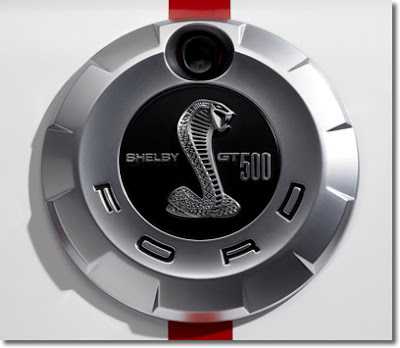 A product of the collaboration between Ford’s Special Vehicle Team and Texan and synonym with fast, collectible special editions, Carroll Shelby, the GT500 convertible marks the most powerful Mustang convertible ever.
A product of the collaboration between Ford’s Special Vehicle Team and Texan and synonym with fast, collectible special editions, Carroll Shelby, the GT500 convertible marks the most powerful Mustang convertible ever. The power - all 500 horses - comes courtesy of a supercharged and intercooled 5.4 liter V8. While that power peak comes at 6,000 rpm, just 250 revs short of the redline, the 480 lb-ft of torque is available at 4,500 rpm. The engine requires premium fuel. The only transmission available with this monster motor is a Tremec TR6060 six-speed manual. While a more powerful King of the Road edition of the coupe bowed in 2008, there is no convertible King.
For 2008, there are new front driver- and passenger-seat side air bags to provide side-impact head protection as well as rollover protection. Vapor Metallic exterior paint also replaces Tungsten Grey on the options list.
The Roots-type supercharger chugs the atmosphere to the tune of 8.5 psi and gets it served cold thanks to an air-to-water intercooler.
Other goodies on the GT500 drop-top include 18- x 9.5-inch wheels wrapped in rubber sized at 255/45-18 up front and 285/40-18 out back,
hiding 14-inch vented discs squeezed by four-piston aluminum calipers with Brembo proudly displayed on them in the front and 11.8-inch, 2-piston units for the rear wheels.
Due to the top mechanism and the necessary bracing throughout the convertibles structure, curb weight increases compared to the coupe by 120 lbs, to 4,040 lbs. Also, trunk space is down 2.6 cubic feet, down to 9.7, and there is slightly less hip room (1.3 inches) and shoulder room (8.3 inches) in the rear seats, though head room with the top up grows by 1.3 inches.
Options on the GT500 include the aforementioned 7-color ambient interior lighting and HID headlamps and Shaker 1000 Audio System (in-dash 6-disc CD, MP3 and 10 speakers), Sirius Satellite Radio, touch screen DVD-based navigation and a Premium Interior Trim Package.
5.4L 32-valve DOHC supercharged & intercooled V8 engine
6-speed Tremec manual transmission
Limited-slip differential
Traction control
Rear wheel drive
SVT-tuned MacPherson strut front suspe
nsion w/unique dampers & coil springs
SVT-tuned live-axle rear suspension w/unique dampers & coil springs
P255/45ZR18 performance front tires & P285/40ZR18 performance rear tires
18" x 9.5" GT500 unique bright machined wheels w/SVT center caps
Wheel locking kits
Tire inflation kit
Pwr steering
Pwr vented 4-wheel disc brakes w/Bre
mbo front rotors & calipers
4-wheel anti-lock braking system (ABS)
Stainless steel tuned X-pipe design dual exhaust
Unique aluminum hood w/functional air vents
Black cloth convertible top
Unique color-keyed front/rear fascia
Unique rear spoiler
GT500 side stripes
Unique upper & lower grilles
Complex reflector halogen headlamps
Front fog lamps
Dual pwr exterior mirrors
Variable intermittent windshield wipers
Unique leather sport bucket seats w/cobra logo-inc: 6-way pwr adjust driver seat w/pwr lumbar, increased lateral support
Center console-inc: armrest, storage bin
Front color-keyed floor mats w/driver retention hook
Leather-wrapped tilt steering wheel w/red stitching, unique thumb pads
Brushed aluminum accented (6) gauge instrument cluster-inc: boost gauge, message center, SVT graphics
My Color customizable 125-color interior lighting system
Tire pressure monitoring system
Pwr windows
Pwr door locks
Remote keyless entry
Cruise control
Shaker 500 audio system-inc: AM/FM stereo w/6-disc in-dash CD changer, MP3 player, (6) speakers
Active anti-theft system-inc: perimeter/intrusion alarms
SIRIUS satellite radio w/6 month subscription
Air conditioning
Rear window defroster
Aluminum accented air register vents
(2) cupholders
(2) pwr points
Front door map pockets
Soft vinyl door trim inserts
Scuff plate w/bright "SVT" insert
Header-mounted dome lamp
Illuminated entry
Unique shift knob w/leather shift boot & parking brake handle
City 14/hwy 20 (5.4L supercharged engine/6-speed manual trans) (2008)
4-wheel anti-lock braking system (ABS)
Second generation front air bag system for driver & front passenger
Seat mounted side-impact airbags for driver & front passenger
3-point active safety belts in all seating positions
Front seat Belt Minder
LATCH (lower anchors & tethers for children) system on rear outboard seats
Traction control
Source: LeftLane
2008 Ferrari 430 Scuderia
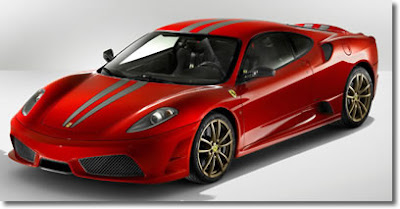
 The new model is a special series based on the F430 and is aimed specifically at Ferrari's most passionate and sports-driving oriented clients. Development focused on light weight, minimum trimmings and innovative technology. All this to exalt the car's extremely high-performance and ability to thrill the driver.
The new model is a special series based on the F430 and is aimed specifically at Ferrari's most passionate and sports-driving oriented clients. Development focused on light weight, minimum trimmings and innovative technology. All this to exalt the car's extremely high-performance and ability to thrill the driver. The new car can count on an extremely low weight-to-power ratio of just 2.45 kg per bhp thanks to a low dry weight of just 2755 lb - 220 lb less than the F430 - and to the naturally-aspirated 4308cc V8's 510 bhp at 8500 rpm.
The new car can count on an extremely low weight-to-power ratio of just 2.45 kg per bhp thanks to a low dry weight of just 2755 lb - 220 lb less than the F430 - and to the naturally-aspirated 4308cc V8's 510 bhp at 8500 rpm.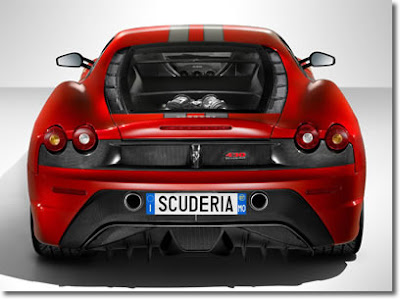
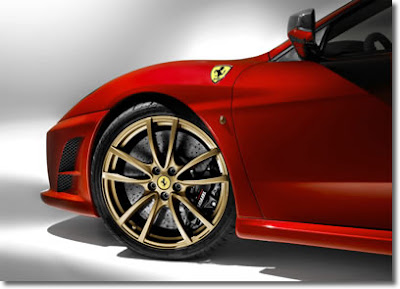 Superb performance both on and off the track is assured by a series of cutting-edge solutions. There is the latest software - F1 Superfast - which reduces gearchange times to just 60 milliseconds, and new traction control which, for the first time, combines the E-Diff electronic differential and the F1-Trac traction and stability control in a single integrated system.
Superb performance both on and off the track is assured by a series of cutting-edge solutions. There is the latest software - F1 Superfast - which reduces gearchange times to just 60 milliseconds, and new traction control which, for the first time, combines the E-Diff electronic differential and the F1-Trac traction and stability control in a single integrated system.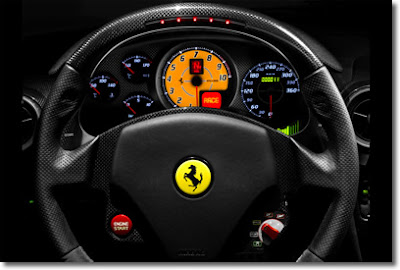
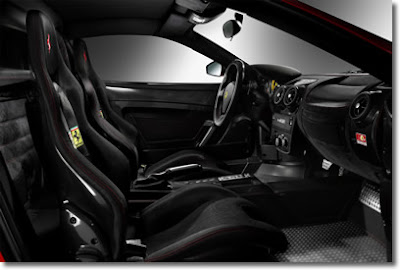 Vehicle dynamics, control and performance thus represent the zenith of Ferrari's achievements in terms of developing road-certified sports cars.
Vehicle dynamics, control and performance thus represent the zenith of Ferrari's achievements in terms of developing road-certified sports cars.| Specifications | |||||||||||||||||||||||||||||||||||
| | ||||||||||||||||||||||||||||||||||
The 430 Scuderia will be officially unveiled by Michael Schumacher at the IAA Motor Show in
